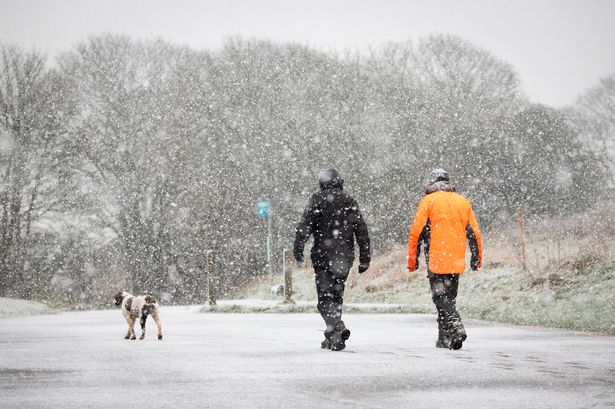The meteorological outlook for Britain paints a stark picture, with weather models unequivocally predicting the imminent arrival of a second significant cold snap this month. This follows closely on the heels of a previous period of frigid temperatures, raising concerns about the cumulative impact on infrastructure, vulnerable populations, and the overall energy demand across the nation. The impending cold spell promises a widespread return to sub-zero temperatures, accompanied by potential snowfall and icy conditions, creating a challenging environment for both daily life and essential services.
This second wave of wintry weather is expected to encompass a broader geographical area than its predecessor, affecting regions that previously escaped the brunt of the initial cold snap. The projected temperature drops are anticipated to be substantial, plummeting several degrees below freezing, particularly during nighttime hours. This poses a significant risk of frost and ice formation, leading to hazardous conditions on roads and pavements, potentially disrupting transportation networks and increasing the risk of accidents. The combination of low temperatures and potential snowfall will create a demanding environment for individuals experiencing homelessness or living in inadequately insulated housing, highlighting the need for robust support services and emergency accommodations.
The imminent cold snap carries the potential for significant snowfall across various regions of the UK. While the precise locations and accumulation levels remain subject to ongoing forecasting updates, current models suggest the possibility of widespread snow cover, especially in higher altitude areas and northern parts of the country. This snowfall, coupled with the already freezing temperatures, will exacerbate the challenges posed by the cold snap, impacting travel, logistics, and daily routines. The potential for heavy snow accumulation raises concerns about power outages due to downed power lines, disruptions to supply chains, and the need for snow removal efforts to maintain accessibility and essential services.
The impending cold snap necessitates a comprehensive preparedness strategy across various sectors. Local authorities and emergency services are gearing up for increased demand for their services, from gritting roads and providing shelter for the homeless to responding to weather-related incidents. The National Health Service (NHS) is anticipated to experience increased pressure due to cold-related illnesses, exacerbating the existing strain on healthcare resources. The public is strongly advised to take precautions against the cold, including dressing in warm layers, checking on vulnerable neighbors, and ensuring adequate heating in their homes.
The repetitive nature of these cold snaps within a short timeframe raises concerns about the potential strain on energy infrastructure and the overall energy demand. The increased reliance on heating systems during prolonged periods of sub-zero temperatures places significant pressure on the national grid, highlighting the importance of energy efficiency measures and the need for robust contingency plans in case of power outages. The cost of heating homes during these cold snaps also poses a significant financial burden for many households, particularly those struggling with rising energy prices, further emphasizing the need for targeted support programs to alleviate fuel poverty.
The arrival of a second cold snap so soon after the previous one underscores the importance of proactive planning and community resilience. The combined impact of these consecutive cold spells highlights the need for long-term strategies to mitigate the effects of extreme weather events, including investments in infrastructure improvements, energy efficiency programs, and support systems for vulnerable populations. The current meteorological situation serves as a stark reminder of the challenges posed by a changing climate and the need for ongoing efforts to adapt and prepare for increasingly frequent and intense weather events. The ability of individuals, communities, and national infrastructure to withstand and recover from these events will be crucial in ensuring public safety and minimizing disruption to daily life.














